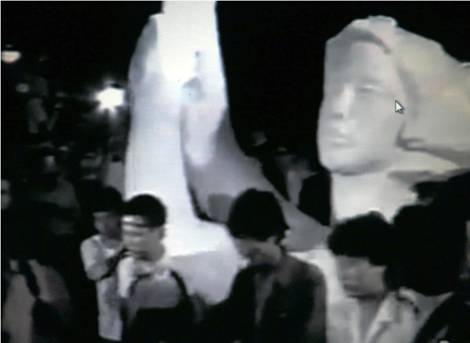Cicadas are commonly heard in the hot summers buzzing or “singing” in trees. Cicadas are 1-1/2 to 2 inches long with thick bodies, wings, 6 legs and bulging eyes. The most common species in the Arizona desert is the Apache cicada, which is dark-colored with a pale tan band just behind its head. The adult males produce a loud, shrill-like noise to attract or court females. The male Cicada may be the loudest insect; their “songs” can be heard as far away as 450 yards.Cicadas are not harmful to humans in any way. They do not bite or carry diseases. The cicadas spend most of their lives as nymphs feeding underground on the roots of trees or other plants. The nymphs emerge from their underground habitats during summer evenings, beginning in June. Holes in the soil about one half inch in diameter mark their exits. They crawl up nearby tree trunks, plants or buildings and cling there. Eventually the back of the nymph begins to split open and the adult winged cicada emerges. Often their hard, transparent leftover skins or exoskeletons are found attached to trees or buildings.
Cicada adults live only three to four weeks. After mating, the female cuts open twigs with her saw-like egg-laying body part, and deposits her eggs in the slits. When the eggs hatch, the nymphs drop to the ground and burrow into the soil in search of food. The species of cicada found in Arizona finish their life cycles in two or three years. This is not true of all cicadas.
Cicadas are sometimes referred to as the “rain bug” because they seem to sense the monsoon is approaching and come out from their underground burrows, a week or two before the Arizona monsoon season begins. Esperanza was right about the cicadas liking the heat and thinking that the arrival of the cicadas was linked to the summer rains.
By Stephanie Bailey –
Entomology Extension Specialist Only male cicadas sing. Their songs are produced by two drum-like organs called tymbals, which are attached to powerful muscles on the underside of the abdomen, next to the thorax. The “eardrums” or tympana lie behind the tymbals. When the muscles attached to the tymbals are tensed and then released, the tymbals vibrate, producing the characteristic song. The mechanism is similar to tapping a metal lid many times in succession. Different species of cicadas produce slightly different songs. By “singing,” the cicadas are able to gather nearby populations of males and females of the same species together.

They come from everywhere
From the early summer hills
And the lush bamboo groves
Cicadas sing their old summer songs
Amidst the thick air of ominous June
Red peony sky hangs over the Eastern Gate
Aging dynasty clings to its blood-stained throne
China, history is shouting
Your chest is aflame
Your mournful children are awakening

They come from everywhere
From the rugged Silk Roads
Across the Yellow River
Like a whirlwind sweeps across the tethered terrain
Here, on Tiananmen Square
Young dragons are gathering
Their eyes spark an iron will
In the garden of summer palace
Cicadas sing their old summer songs
Willow trees, swaying listlessly
Under the totalitarian clouds
Look, all the campus lights are dimmed
Crowded dorms emptied
No one studies in the library anymore
Where have all my comrades gone?
A generation, the nations’ best
Is prepared to fight for democracy
By the Goddess of Liberty
Voices for human rights escalate
Classes are held under the starlight
The square becomes a school for democracy and
A people’s republic is flourished

Arms link with arms
Waves of human barricades propel forward
With their bare torsos to meet the guns
China, can’t you hear your ghosts are coming back
To claim their living rights
No longer do I fear the dark night
No more thesis to write
No more cadre meetings
Mother, do not wait for me either
I won’t be home for dinner tonight
Not before my aims are met

My belly is filled with rage
Sixty years of indignation
Our education, infested with propagandas
Our knowledge, but a twisted truth
A life denied of free expressions
Tamed and broken like a circus animal
Made to serve a hostile party called comrades
Once promised a classless revolution
No more, no more, no more!
Cicadas, your wings are trembling
In the land of oppression and persecution
Our conscience are crushed
Eyes, ears and mouths
Our natural senses are censored
Only a sigh from silence faces lives on
Revolution or execution
Who can now shut his eyes
Daughters of solidarity
You have pledged
With firm fists to declare
The only resolution

Who says freedom is inconceivable?

From the northern frontier
A reign of terror rises like apocalyptic clouds
In darkness, militant forces are encroaching
The People’s Liberation Army
Turns its weapons against its own people
With tanks and trucks to crush the young flesh of hope

High above the stricken city hides a pale moon
Red rivers spill into the sleeping alleys
With no time to bid farewell
Our children are left to bleed
So young, eager for life
Under the lightning of firing bullets
They swallowed their last breaths
Before twilight
Our sons and daughters
Were drenched in blood
They lay motionless
Eyes were still open

Mothers, do not wait for them anymore
Out of their scattered limbs
An immutable race is born
To take back the laws from
A party with hearts-of-stones
Once seized its power
In the name of revolution
Our bodies have been beaten
Our lives, imprisoned
But our voices shall not be silenced
As millions more are joining in
The impatient history shall be our witness

Weep no more, cicadas
Though the hills stridulate in mourning
Forsythias are still blooming
Red peony sky hangs over the eastern gate
As red as the flames of a new revolution

China, can’t you see
Your defiant children are united
The black sun of June
Once draped over the murdered
Must break open into a brilliant sky
Like lungs for air, hearts for hope
Towards freedom!
June 1989
This poem is an elegy for those who were killed at Tiananmen Square on June 4, 1989 and is dedicated to their mothers.

Acknowledgement: The photos were from various documentary films on the Tiananmen Square massacre, intended as a memorial.
| Practice reading the cicada poem from Joyful Noise: Poems for Two Voices orally with a partner to get the effect of the choral reading. Perform for the class. | Draw a colored series of cicada species’ illustrations to display in the classroom; be sure to label each species clearly. |
Research other species of cicadas that live in Arizona. Make a science booklet in the shape of a cicada to store your written research data. |
| With a partner create a science “podcast” describing what you learned about cicadas. Be sure to include a recording of cicadas’ songs. | Make an origami cicada and write a poem about cicadas to glue to the back of the folded insect. Display your project. |
Read any of the books about cicadas found in the center. Write a brief summary of any interesting and/or new knowledge and share with the class. |
Review Esperanza’s description of the “singing tree” on pages 5 – 6. Does the book description match any of the words you used to describe the Apache cicada? Underline any matching words.
What do you learn about the cicada’s exoskeleton at the blogspot? In the circle draw a diagram of the cicada’s exoskeleton. Have you ever seen one of these attached to a tree or a building? When and where?


Review the pictures of eggs laid in branches